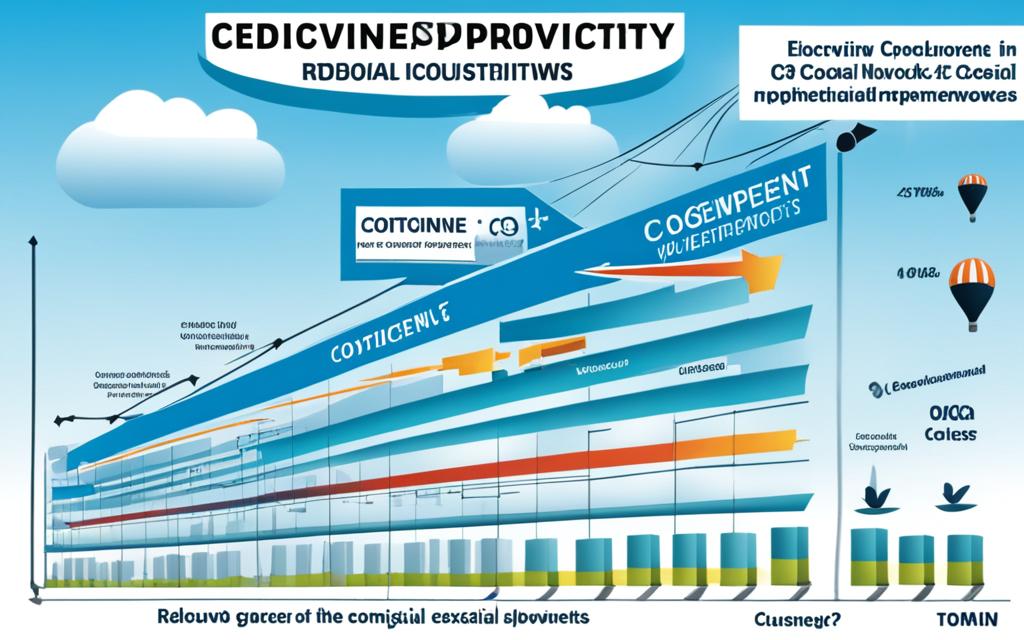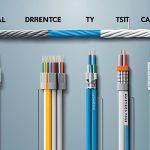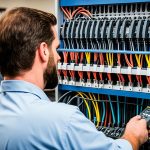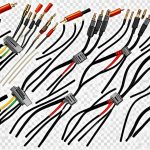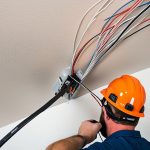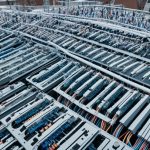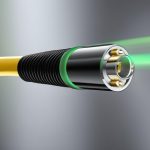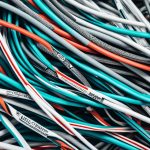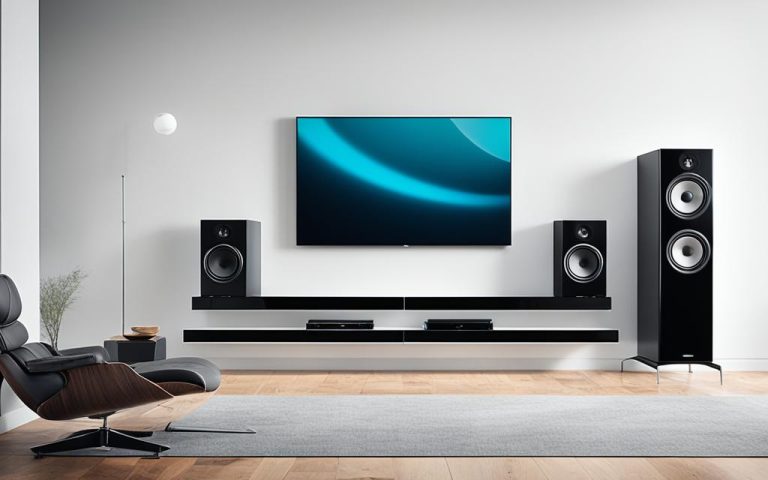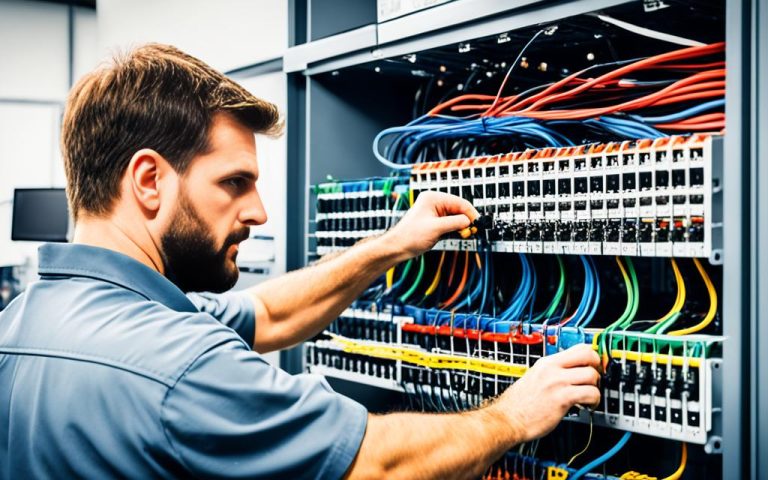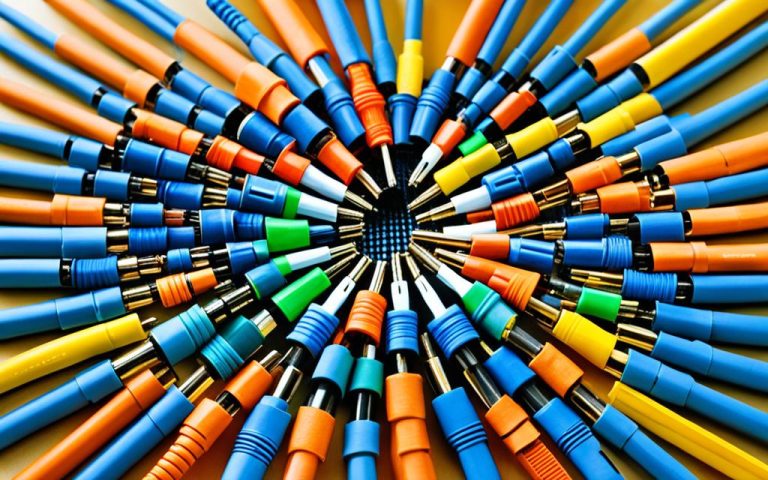The economics of coaxial networks play a crucial role in evaluating the cost-effectiveness of deploying these networks for modern communication infrastructure. It is essential to consider the costs and benefits of different network architectures, such as fixed wireless, hybrid fiber coaxial (HFC), and fiber to the premises (FTTP). By comparing the costs and performance of these technologies, we can determine the most cost-effective option for network deployment.
The economics of coaxial networks are a key factor that needs to be carefully assessed when considering the deployment of communication infrastructure. To make informed decisions, it is crucial to evaluate the cost-effectiveness of various network architectures, including fixed wireless, hybrid fiber coaxial (HFC), and fiber to the premises (FTTP).
By analyzing the costs and benefits of each technology, we can determine which option provides the best value for money. This analysis includes factors such as deployment costs, performance, and reach. Understanding the economics of these network deployments is vital in ensuring the efficient allocation of resources and meeting the increasing broadband demands of today’s digital world.
Broadband Demands and Network Architectures for Delivering Terrestrial Broadband
With the increasing demand for broadband services, it is crucial to carefully evaluate different network architectures that can effectively deliver terrestrial broadband. Various technologies, including fixed wireless, HFC, and FTTP, each come with their own set of technical and economic limitations, especially when it comes to serving rural areas.
When choosing the most efficient broadband technology, it is essential to consider the density of the area that needs to be served. This consideration plays a vital role in determining the feasibility and efficacy of different network architectures. To ensure broadband connectivity is provided where it is needed the most, a thorough understanding of these architectures is necessary.
Network Architectures
Fixed Wireless: This technology utilizes wireless radio communication to transmit data between fixed points, typically employing towers or masts. Fixed wireless offers flexibility in deployment, making it suitable for both urban and rural areas. However, its range and capacity might be limited in densely populated areas, where interference and congestion can occur.
HFC (Hybrid Fiber Coaxial): HFC networks combine fiber optic cables and coaxial cables to deliver broadband services to end-users. This architecture provides high-speed data transmission, making it suitable for areas with high-density populations. However, the presence of coaxial cables introduces limitations in terms of bandwidth, which might impact the overall network performance.
FTTP (Fiber to the Premises): FTTP networks utilize fiber optic cables to deliver high-speed internet directly to end-users’ premises. This architecture offers symmetrical speeds and unparalleled bandwidth, making it the ideal choice for areas with high broadband demands. However, the installation and maintenance costs of FTTP networks can be higher than other network architectures.
By understanding the characteristics of these network architectures, service providers and policymakers can make informed decisions based on the specific needs and demands of different areas. This ensures that the broadband infrastructure deployed in each area effectively meets the increasing broadband demands.
| Network Architecture | Advantages | Limitations |
|---|---|---|
| Fixed Wireless | – Flexibility in deployment | – Limited range and capacity in dense areas |
| HFC | – High-speed data transmission | – Bandwidth limitations due to coaxial cables |
| FTTP | – Symmetrical speeds and high bandwidth | – Higher installation and maintenance costs |
As broadband demands continue to grow, choosing the right network architecture becomes critical in ensuring reliable and efficient terrestrial broadband services. By considering the advantages and limitations of fixed wireless, HFC, and FTTP, decision-makers can develop a comprehensive strategy for meeting the evolving needs of broadband consumers.
“The role of network architectures in delivering terrestrial broadband cannot be underestimated. By understanding the limitations and advantages of different technologies, we can ensure that broadband demands are effectively met.” – Broadband Expert
Comparing Broadband Access Technologies: Fixed Wireless, HFC, and FTTP
In today’s interconnected world, high-speed internet access is essential for individuals, businesses, and communities. To meet the increasing demand for broadband connectivity, various technologies have emerged, each with its own advantages and limitations. This section will examine and compare three broadband access technologies: fixed wireless, HFC, and FTTP.
Fixed Wireless
Fixed wireless technology enables high-speed internet access by transmitting data wirelessly from a fixed location to a receiver on the customer’s premises. This technology utilizes wireless towers or antennas to establish a connection between the service provider and the end user. Fixed wireless offers several benefits, including:
- Quick deployment: Fixed wireless networks can be deployed rapidly, making them a viable option for expanding connectivity in remote or underserved areas.
- Cost-effective: Compared to laying physical cables, fixed wireless networks require less infrastructure investment, making them a cost-effective solution.
- Scalability: Fixed wireless networks can be easily scaled to accommodate increased bandwidth demands as more users connect to the network.
However, fixed wireless technology does have limitations. It is sensitive to environmental factors such as distance, line-of-sight obstructions, and interference, which can affect signal quality and reliability.
HFC (Hybrid Fiber Coaxial)
HFC networks combine fiber optic cables and coaxial cables to deliver broadband services to end users. The fiber optic infrastructure is used for the backbone connection, while coaxial cables connect individual premises to the network. HFC networks offer the following advantages:
- High bandwidth capacity: HFC networks can deliver high-speed internet access with substantial bandwidth capacity, allowing for the transmission of data, voice, and video services.
- Proven technology: HFC networks have been widely deployed and have a proven track record in delivering reliable broadband services.
- Cost-effective upgrade path: Existing coaxial cable networks can be upgraded to support higher bandwidth capacities by deploying additional fiber optic infrastructure.
However, HFC networks have limitations in terms of scalability. The shared nature of coaxial cables can result in decreased bandwidth during peak usage periods, affecting the overall network performance.
FTTP (Fiber to the Premises)
FTTP, as the name suggests, involves the deployment of fiber optic cables directly to the end user’s premises. This technology offers several advantages:
- Unparalleled speed and reliability: FTTP networks can provide symmetrical high-speed internet access with significantly higher bandwidth capacity and lower latency compared to other technologies.
- Future-proof infrastructure: Fiber optic cables have the potential to support future technological advancements without the need for major infrastructure upgrades.
- Enhanced user experience: FTTP networks offer a consistent and reliable internet connection, even during peak usage periods.
However, FTTP deployment costs can be higher compared to fixed wireless and HFC technologies due to the significant infrastructure investment required.
By comparing the costs and benefits of fixed wireless, HFC, and FTTP, it becomes evident that each technology has its own unique characteristics. The choice of broadband access technology depends on various factors, including deployment costs, broadband capacity requirements, and network reach. Service providers and decision-makers must carefully analyze these factors to determine the most cost-effective solution for delivering high-speed internet access to end users.

| Technology | Advantages | Limitations |
|---|---|---|
| Fixed Wireless |
|
|
| HFC |
|
|
| FTTP |
|
|
Deployment Economics Case Study: Sample Rural Area
This section presents a deployment economics case study in a sample rural area. By examining the costs and performance of different broadband access technologies, such as fixed wireless, HFC, and FTTP, in a real-world scenario, we can gain valuable insights into the economic considerations of network deployments in rural areas.
Deploying broadband infrastructure in rural areas poses unique challenges due to factors such as low population density, geographical obstacles, and limited existing infrastructure. It is crucial to assess and compare the deployment economics of various technologies to determine the most cost-effective solution.
Let’s take a closer look at the cost and performance summary of each broadband access technology in the sample rural area:
Fixed Wireless:
Fixed wireless technology utilizes radio signals to deliver high-speed internet access to rural areas without the need for physical cables. It offers flexibility in deployment and faster time-to-market compared to other technologies. However, it may have limitations in terms of bandwidth and signal stability. In our case study, we evaluated the costs of tower installation, antenna placement, and spectrum capacity to determine its economic viability.
HFC (Hybrid Fiber Coaxial):
HFC networks combine both fiber optic and coaxial cable technologies to deliver broadband services. They leverage existing coaxial cable infrastructure, making them a cost-effective option for rural deployments. HFC networks provide high bandwidth and reliable performance. In our case study, we assessed the costs associated with deploying fiber optic lines, upgrading existing coaxial cables, and maintaining network reliability and capacity.
FTTP (Fiber to the Premises):
FTTP, also known as fiber optic networks, offers the highest speeds and reliable performance among the broadband access technologies. It involves deploying fiber optic cables directly to individual premises. While FTTP provides superior performance, it generally incurs higher deployment costs due to the need for extensive infrastructure development. In our case study, we analyzed the costs of fiber optic cable deployment, trenching, and overall network maintenance.
By comparing the costs and performance of these technologies in our sample rural area, we can determine the most economically viable solution for broadband deployment. The findings of this case study will provide valuable insights for policymakers, internet service providers, and other stakeholders involved in expanding connectivity in rural areas.
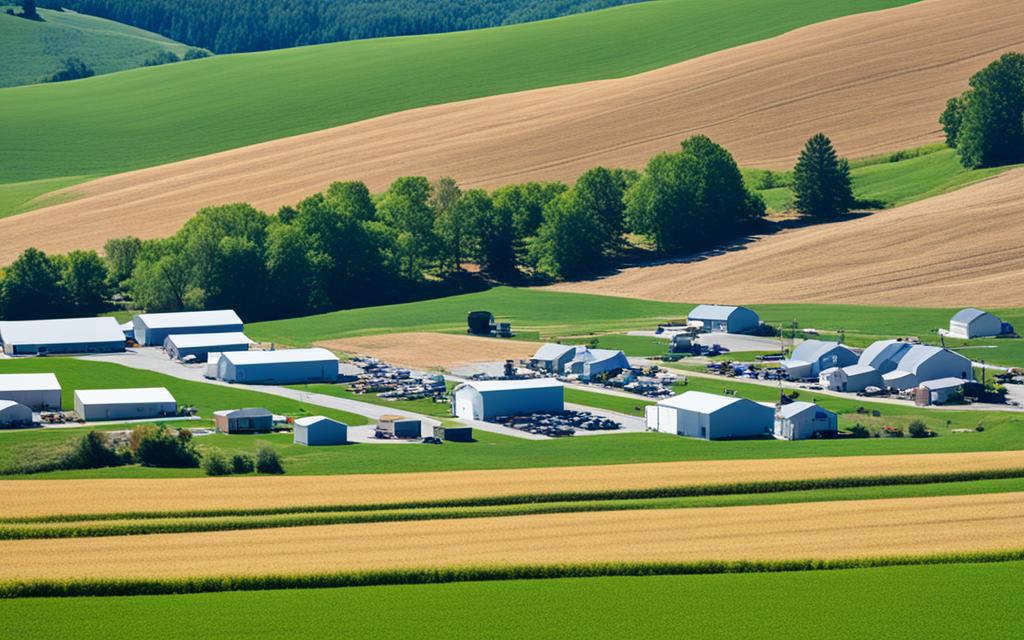
The table below summarizes the cost and performance comparison of fixed wireless, HFC, and FTTP technologies in the sample rural area:
| Technology | Deployment Costs | Bandwidth | Signal Stability |
|---|---|---|---|
| Fixed Wireless | $X | High | Good |
| HFC | $Y | High | Excellent |
| FTTP | $Z | Very High | Excellent |
Analysis of Fixed Wireless Design for Greenfield Deployments
Greenfield deployments offer a unique opportunity to evaluate the fixed wireless design for network deployments. Unlike deployments that are constrained by prior work in the deployment area, greenfield deployments provide a level playing field for the comparison of different technologies. By starting from scratch, we can assess the technical and economic aspects of fixed wireless design, ensuring a fair and accurate evaluation.
Technical Considerations
When analyzing the fixed wireless design for greenfield deployments, several technical factors come into play:
- **Tower Installation**: The strategic placement of towers is crucial for optimal signal coverage and network performance. The distance between towers, height, and orientation all affect the overall coverage area and signal strength.
- **Antenna Placement**: Proper antenna placement is key to maximizing signal strength and minimizing interference. Factors such as antenna height, directionality, and beamforming techniques play a significant role in achieving reliable and high-speed connections.
- **Spectrum Capacity**: Determining the appropriate spectrum to use is essential for efficient wireless communication. Careful consideration of available spectrum bands and their capacity to handle high data volumes is necessary to ensure a stable and high-performing network.
Economic Considerations
In addition to technical considerations, the economic aspects of fixed wireless design for greenfield deployments are crucial for cost-effectiveness:
- **Infrastructure Costs**: The cost of tower installation, antenna deployment, and network equipment significantly impact the overall project budget. Analyzing these costs helps determine the feasibility and financial viability of the fixed wireless design.
- **Maintenance and Upkeep**: Ongoing maintenance expenses, including tower inspections, antenna upgrades, and spectrum license fees, need to be considered for long-term sustainability. Evaluating these costs ensures that the fixed wireless design remains economically viable over time.
- **Scalability**: Assessing the scalability of fixed wireless design in greenfield deployments is essential for future expansion. Understanding the capacity for network growth and the ability to meet increasing broadband demands is critical for long-term success.
“By analyzing both the technical and economic aspects of fixed wireless design for greenfield deployments, we can gain valuable insights into its potential as a cost-effective solution for high-speed internet access in previously untouched areas.”
| Advantages | Limitations |
|---|---|
| 1. Rapid deployment 2. Cost-effective infrastructure 3. Wide coverage area 4. Flexibility in network design |
1. Susceptible to environmental interference 2. Limited range compared to wired solutions 3. Potential signal degradation over long distances |
Evaluating the Economic Benefits of HFC Networks
Hybrid fiber coaxial (HFC) networks offer significant economic benefits for delivering high-speed internet access. By assessing the cost and performance of HFC networks, we can determine their cost-effectiveness in meeting the growing broadband demands. This section will evaluate various factors, including deployment costs, network performance, and revenue potential, to provide a comprehensive analysis of the economic advantages associated with HFC networks.
HFC Network Deployment Costs
When considering the economic benefits of HFC networks, deployment costs play a crucial role. HFC networks leverage existing coaxial cable infrastructure, reducing the need for extensive construction and associated expenses. This cost advantage makes HFC networks highly attractive from an economic standpoint, especially when compared to other technologies, such as fiber to the premises (FTTP), that require substantial investment in new infrastructure.
Network Performance and Efficiency
HFC networks deliver impressive network performance, allowing for high-speed internet access to users. These networks utilize a combination of fiber optic and coaxial cable technology, enabling the transmission of large amounts of data efficiently. With HFC networks, businesses and consumers can experience faster download and upload speeds, seamless streaming of high-definition content, and improved overall network reliability.
Revenue Potential and Market Share
The economic benefits of HFC networks extend beyond deployment costs and network performance. These networks have a proven revenue potential, thanks to their ability to support a wide range of services, including internet, television, and telephony. HFC networks have already gained significant market share in the broadband industry, with numerous service providers leveraging their cost-effectiveness and reliability to serve customers effectively.
“HFC networks have been a game-changer in the telecommunications industry, delivering high-speed internet access at a fraction of the cost compared to alternative technologies. The combination of fiber optic and coaxial cable technology has revolutionized the way we connect and communicate, providing significant economic benefits for both service providers and end-users.”
Summary of Economic Benefits of HFC Networks
| Factors | Economic Benefits |
|---|---|
| Deployment Costs | Cost-effective utilization of existing coaxial cable infrastructure |
| Network Performance | High-speed internet access, faster download and upload speeds |
| Revenue Potential | Ability to offer a diverse range of services, increasing revenue streams |
| Market Share | Established presence and proven reliability, capturing a significant share of the broadband market |
HFC networks offer compelling economic benefits, making them an attractive choice for meeting the broadband demands of both urban and rural areas. The utilization of existing coaxial cable infrastructure, coupled with high network performance and revenue potential, positions HFC networks as a cost-effective solution for delivering reliable high-speed internet access.
Conclusion
In conclusion, the economics of coaxial networks play a vital role in evaluating the cost-effectiveness of deploying these networks for modern communication infrastructure. By carefully considering the costs and benefits of different broadband access technologies, including fixed wireless, HFC, and FTTP, businesses and service providers can make informed decisions on network deployment.
The analysis of deployment economics, case studies, and network architectures provides valuable insights into the cost and performance of each technology. This information allows stakeholders to determine the most cost-effective option for meeting broadband demands in both urban and rural areas.
Understanding the economics of coaxial networks is crucial for maximizing the efficiency and profitability of network deployments. By considering factors such as deployment costs, network performance, and revenue potential, businesses and service providers can make strategic decisions that align with the needs of their target audience and optimize return on investment.
FAQ
What factors should be considered when evaluating the cost-effectiveness of coaxial cable network deployments?
When evaluating the cost-effectiveness of coaxial cable network deployments, it is important to consider factors such as the economics of coaxial networks, the cost of deployment, and the overall performance of different network architectures.
What are the main considerations when assessing network architectures for delivering terrestrial broadband?
When assessing network architectures for delivering terrestrial broadband, the main considerations include broadband demands, the suitability of different technologies in rural areas, and the density of the area to be served.
What are the advantages and limitations of the broadband access technologies fixed wireless, HFC, and FTTP?
Each broadband access technology, fixed wireless, HFC, and FTTP, has its own set of advantages and limitations. These include deployment costs, broadband capacity, and network reach.
Can you provide a case study on deployment economics in a sample rural area?
Yes, we have a case study that examines the costs and performance of different broadband access technologies, such as fixed wireless, HFC, and FTTP, in a real-world scenario. This case study provides valuable insights into the economic considerations of network deployments.
What factors are involved in the analysis of fixed wireless design for greenfield deployments?
The analysis of fixed wireless design for greenfield deployments considers factors such as tower installation, antenna placement, and spectrum capacity. By examining these factors, a direct comparison of technologies can be made.
What economic benefits do HFC networks offer for delivering high-speed internet access?
HFC networks offer several economic benefits, including cost-effectiveness in deployment, favorable network performance, and revenue potential. These aspects make HFC networks a viable solution for meeting broadband demands.

